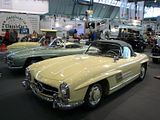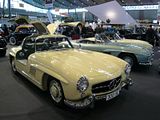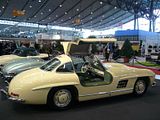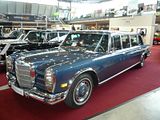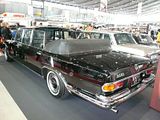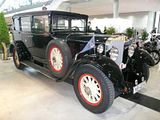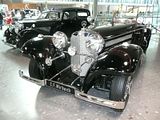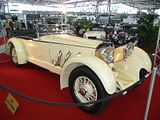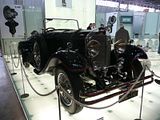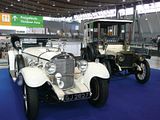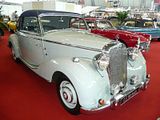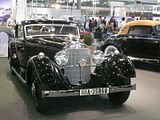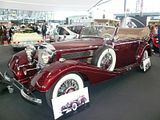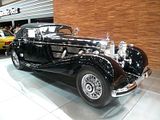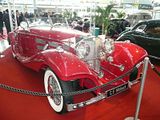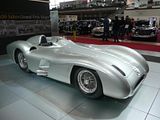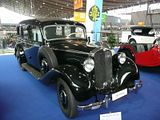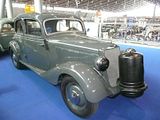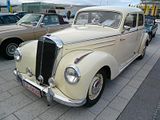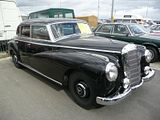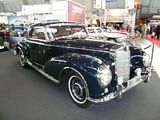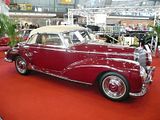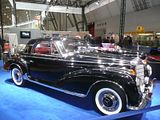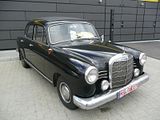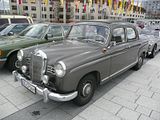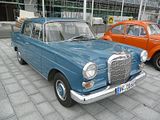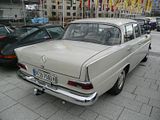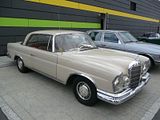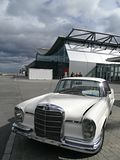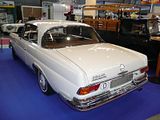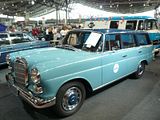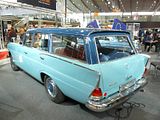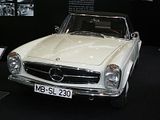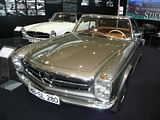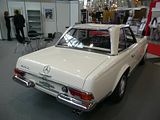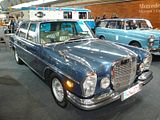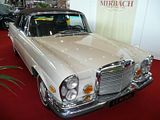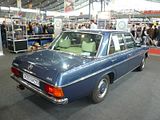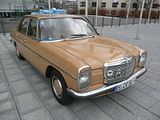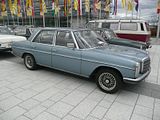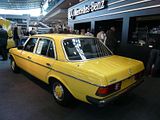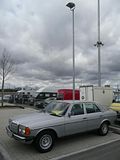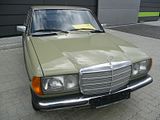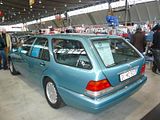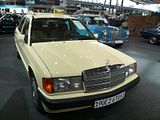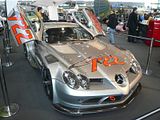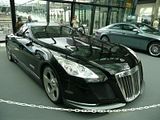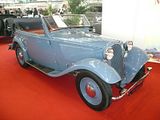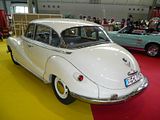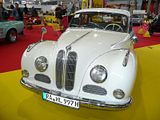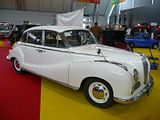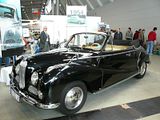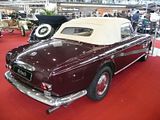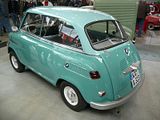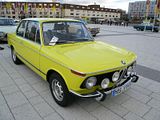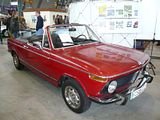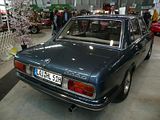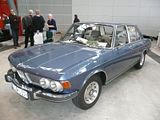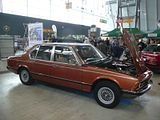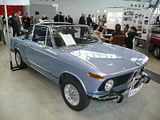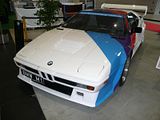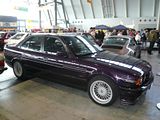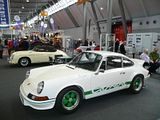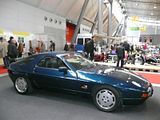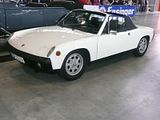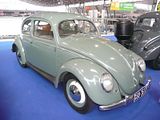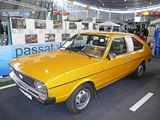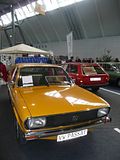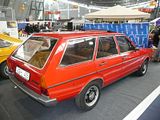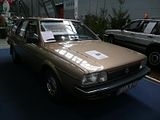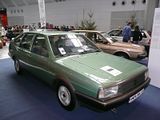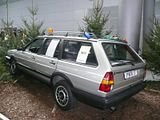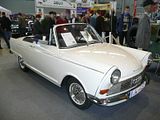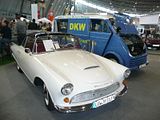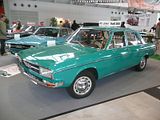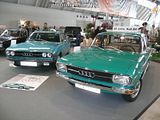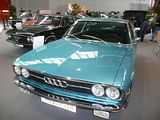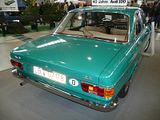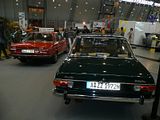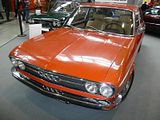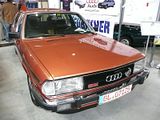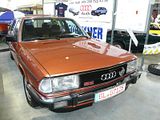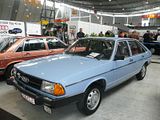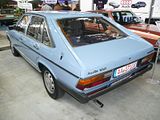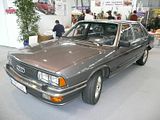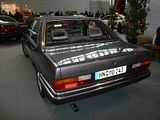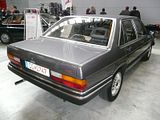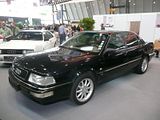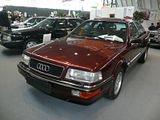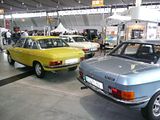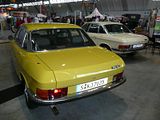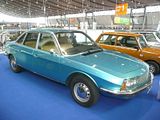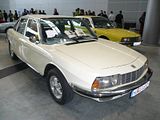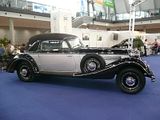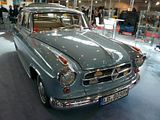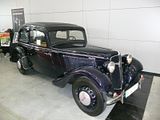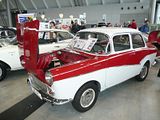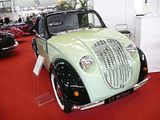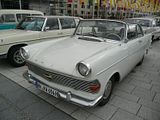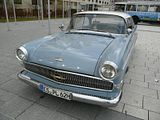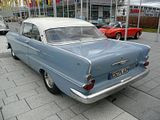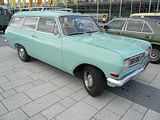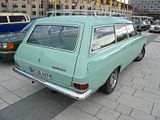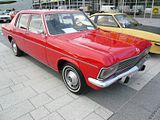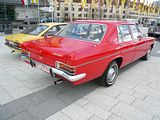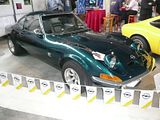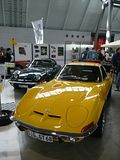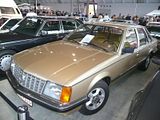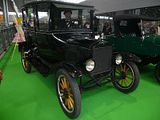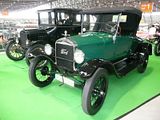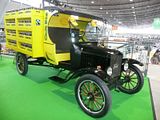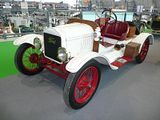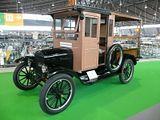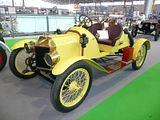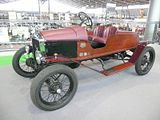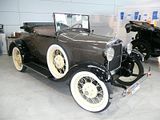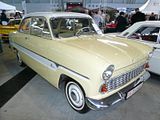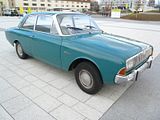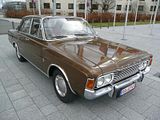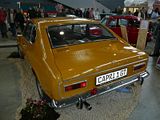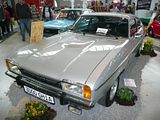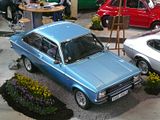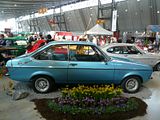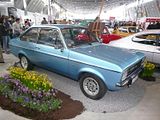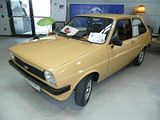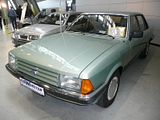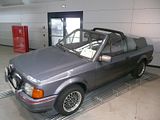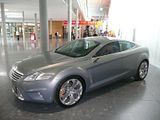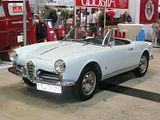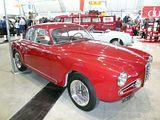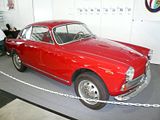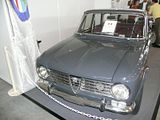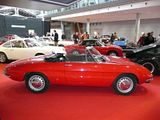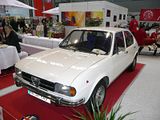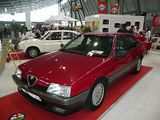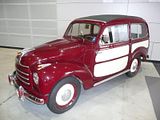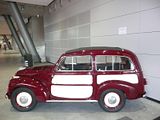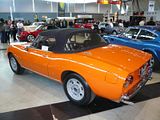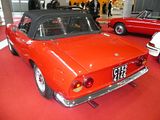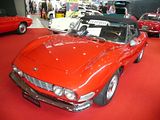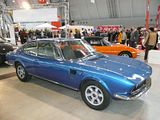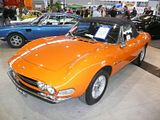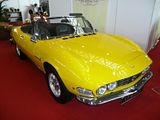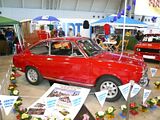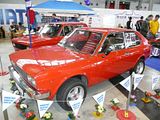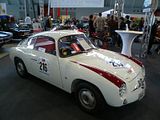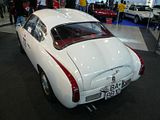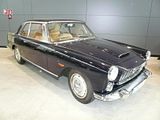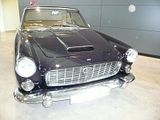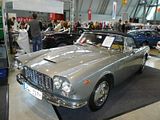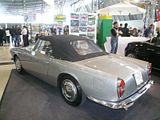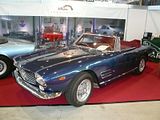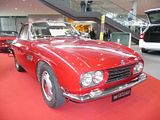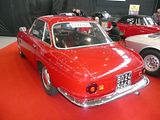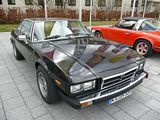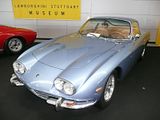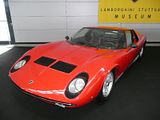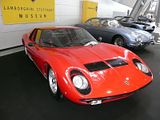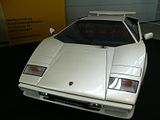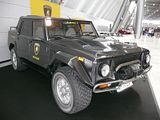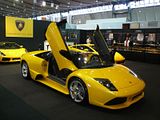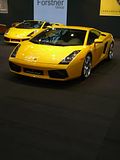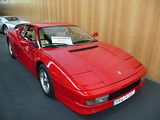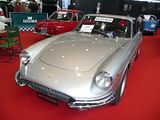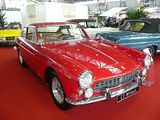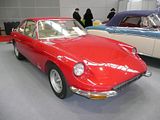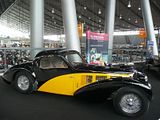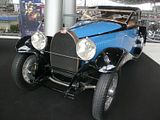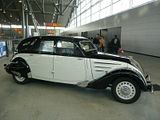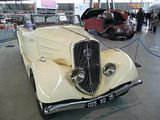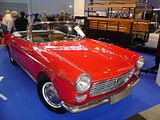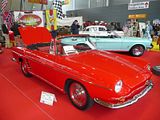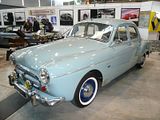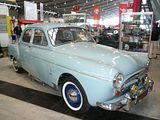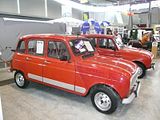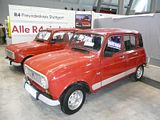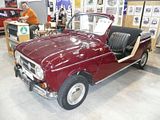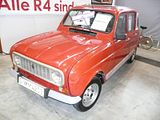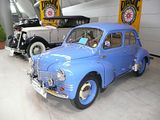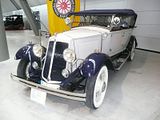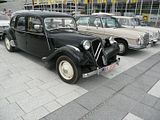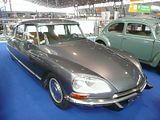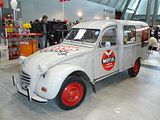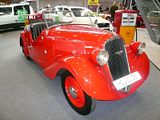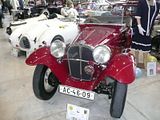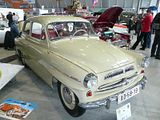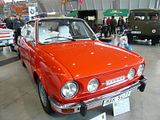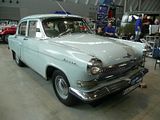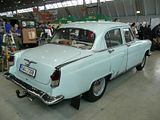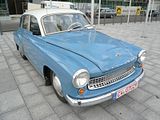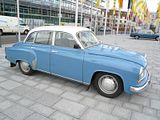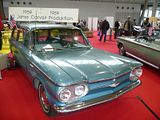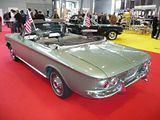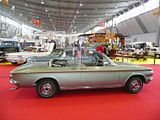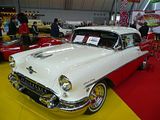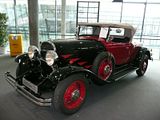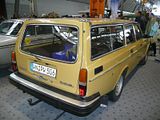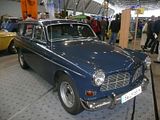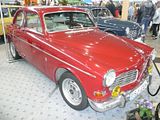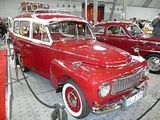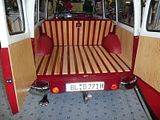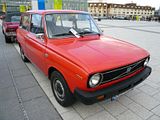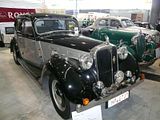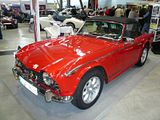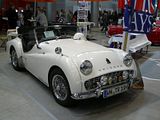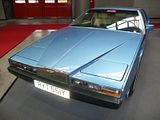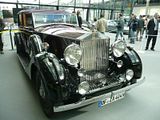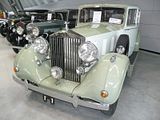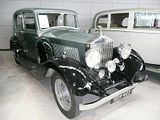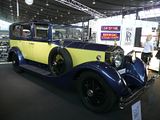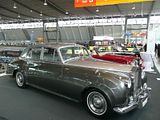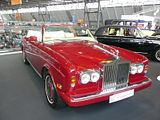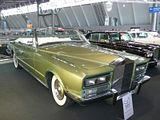Having enjoyed seeing a Classic Car show with a French flavour in February, I decided it was too good an opportunity to miss not to see how the Germans do these things, and so spent this last Sunday at “Retro Classics”, in Stuttgart. The event took place at the new Messe located, between the A8 autobahn and Stuttgart Echterdingen airport. I arrived by car and was very impressed with not just how accessible it is, but also the traffic flow in, and, more importantly out of the venue. Although crowds of people were pouring out of the exhibition halls at the same time as me, there were ample machines to pay for the car park (only 8 Euros), and then the drive out was almost straight out on to the Autobahn. Completely painless. NEC please note! The halls are a short walk away from the airport buildings, and the airport is served by a railway line with connections to Stuttgart Main Station and beyond, so it would be very easy to fly in and out for events here. The venue itself is huge. There are 9 interconnected halls, and although Retro Classics was only using 6 of them, I am sure I walked miles during the day. Being Germany, there were plenty of places to buy food – mostly some form of sausage (!) and drink – local Schwabian beer! Although the main interest was in the exhibition itself, there was a sizeable area allocated outside the halls for people with classic cars, and I had a look around this both on arrival and departure, so the pictures of interesting cars from that have been included in the main report.
MERCEDES-BENZ
Numerically, there were far more Mercedes on show than any other marque. Perhaps this was no more than I should have expected, as not only is the three pointed star held in high esteem, but it has been producing a diverse range of luxury and sporting cars for a long time – just the sort of vehicles that achieve higher than average survival rates. Until this show, I had always assumed that the 300SL (the W198, for the cognoscenti) was a rare car. Certainly the price tags on these models – both the Gullwing and the later Convertible – suggest this. However, there were so many of them at the show, including a few unphotographed “basket case” examples, that I suspect there are a lot more of these cars around than I had thought. Here are a few.
A cheaper version of this car, the 190SL, followed. and this sold in far greater volume
I was also treated to the sight of far more 600 and 600 Pullmans (the W100) than I have ever seen before. Late in the models long life, a Landaulet version was introduced, of which just 59 were built. 2 of these were on show.
In the 1920s and 30s, Mercedes made a name for some very expensive, beautifully finished cars, aimed at the very wealthy. Here are just some of the cars from that era.
Perhaps the very pinnacle of their achievements was this, the 500K. These cars are rarely offered for sale, and nice examples have a lot of 000s on the price tag. Who can wonder why…………. supremely elegant, but with plenty of power available for rapid grand touring.
Mercedes invested huge amounts of money in motor-sport in the 1930s, and again in the 1950s this was one of their more extreme efforts
Even during the 1930s, Mercedes were making a range of cars that were more affordable, and made pioneering research into the use of the diesel engine.
As fuel supplies became restricted, all sorts of novel solutions were adopted to find alternatives, based on various forms of gas, and this adapter model shows the sorts of creativity that was applied, with a wood burning stove which created the gas to power the car.
After the cessation of hostilities, a more utilitarian approach was required, and Mercedes resumed passenger car production with models such as these.
However, they also resumed more luxury offerings, with their 300 series. The saloon model, known as the Adenauer (after the famous owner!), was produced until the very early 1960s, in small quantities
More often seen these days are the 300S Coupe and Convertible models, and several of these were on show
By the mid 1950s, the main volume model was the “Ponton”, a superbly built saloon offered in 180 and 220 model guises, with the novelties of an available diesel engine in some models.
Replacement for the Ponton was the model known as the “Fin Tail”, or “Heckflosse” in German. This car introduced fuel injection to a saloon car for the first time.
As well as producing a saloon, Mercedes quickly added a coupe to the range
Mercedes did not offer a factory-built estate car until 1977, but a number of cars were converted in the 1960s, such as this “Universal” 230S
1964 saw the launch of the iconic “Pagoda” SL, a car that started life as the 230 SL, and over the years saw larger engines, ending up with the 280 SL
Next new model was the first “S” Class, although at the time this was seen simply as a larger, more powerful and more luxurious stable-mate to the familiar cars. Coupe and convertible versions quickly followed, and these cars are now highly prized, and highly priced!
In 1968, the “New Generation”, W114 and W115 models arrived, and several of these were on display
The next generation of mid-sized Mercedes was the W123, launched in 1976, and which saw a production life of 8 years. These models are fast acquiring classic status.
Particularly unusual was this, an estate version of the W140 “S” Class. Built as a one-off in Austria, with a lot of expensive options, this car was something I had never seen before, or even seen in pictures
Mercedes are also well known for their commercial vehicles, and this van is a reminder of a once common sights on the roads of Europe.
Mercedes decided to increase potential sales volume with a smaller model, the 190 series, which was launched in 1982. Although many doubted the wisdom of this at the time, history has shown how sound this move was.
The huge range of cars now offered is topped with the McLaren Mercedes SLR, of which a few examples were included in the show.
MAYBACH
This Concept Car was in a special display area in the main atrium. Not to my taste at all, but draw your own conclusions!
BMW
Although BMW do not have quite such a long history as their Schwabian rivals, I was a little surprised to find that there were far fewer BMWs in the show. Established in the early 1930s, initially making the Austin Seven under licence, BMW quickly moved to designing their own cars. Although they came to prominence with a series of sports tourers, there were some more prosaic models in the range, as well, such as this 315
In the 1950s, BMW were heading towards financial ruin with a series of expensive, and low volume cars that were insufficient to sustain their financial fortunes. These cars are now, however, highly prized. The 501 and 502, referred to as the “Baroque Angel” were the mainstay of the range
This 503 convertible was sold in small numbers in the later part of the 50s.
The linkup with Glas did not really help, either. This 3000CS was, however, a prelude to greater things:
BMW survived because they managed to find sales volume by partnering with some of the bubble car manufacturers, notably the Italian Isetta.
The “Neue Klasse” saloon range was launched in 1961, with the 1500. Gradually, bigger engines were fitted to this car, and it became ever more powerful. This 2000 Ti-Lux is one of the later models.
In 1967, a smaller 2 door version of this car appeared. This is the iconic “02” range, offered also as a convertible, and later the not-particularly successful 3 door Touring.
One of the first BMWs to have an “E” number was this, the E3 2500/2800 range of high sports/luxury saloons
By the 1970s, BMW were into the stride, with an ever broadening range of cars, built to a formula which survives even today. This is a first generation 7 series, a 732 (E23).
It was not until the E30 convertible of the mid 1980s that BMW made their own rag tops
Before that, they worked with Baur to produce open-topped versions of their smaller cars, such as this one:
In 1977, BMW’s planned supercar, built in conjunction with Lamborghini hit problems as Lambo lurched into bankruptcy. BMW’s solution was to reposition the car, and launched a one-make, one season race series, called “ProCar”, for the vehicle that was launched as the M1, and here is one example of that car.
I discovered this Concept Car, well hidden away at the back of stand promoting the latest Mini
ALPINA
Only a couple of Alpina cars in the show, including this B10 model.
PORSCHE
A scattering of these famous cars was to be found throughout the show. 911 Carerra – still viewed by many as the best Porsche “ever”
928
968 Cabrio
This was the combined offering with VW, the 914
917-K
VW
Considering the fact that VW is by a huge margin the most successful manufacturer in Germany, I was perhaps expecting to see more examples of VWs on show. Of course there were Beetles
There was a special display of Passats, showing how the range has evolved over the years. This is a first generation model, dating from 1975. An “L” model, but with the later hatchback (early models had a conventional boot lid, despite the fastback styling).
The facelifted model looked like this 1978 car, which was one of the first injected versions of the car, a GLi
The second generation model arrived in 1980.
A special concept car, the IRVW was created, closely based on the Passat 2, and it was loaned from VW’s Wolfsburg collection.
Buoyed by the success of the Quattro, VW decided to go down the four wheel drive route, and they called their cars the “Syncro”. This Passat GT Estate was one such example.
AUDI
The 4 interconnected rings of the Audi badge symbolise the fact that this is a merger of 4 separate companies: at one time called “Auto Union”, the Audi name was resurrected in the 1960s.
In the 1930s, however, Audi made large luxury cars, like this one. By the mid 1950s, the DKW brand was to the fore, and this was the offering of the day. The Auto Union 1000 This was followed up by the Junior.
The 1000 SP sport coupe
It is 40 years since the launch of the Audi 100, the car which really cemented Audi’s reputation as a maker of quality saloons and estates. Several examples of the first generation model were on show, including a 2 door saloon, and 2 versions of the 100S Coupe.
The second generation model arrived in 1976, and this model became famous for the first production use of a 5 cylinder engine. Aping the style of the Passat, the first “Avant” model followed in late 1977.
In 1979, a luxury model was added to the range, called the 200, and 2 examples of this were on show.
The third generation car was the one that made “cd” a household term, with the lowest drag coefficient of any production car at the time. Once again, there was a 200 version of this car, as well.
Some years later, in an attempt to move still further upmarket, Audi created the V8. This car was not terribly successful, as it looked very similar to its more humble relatives, but bore a sizeable price tag. Only with subsequent model generations, as the A8, has Audi seen more success.
NSU
When introduced in 1967, the Ro80 was a revelation. The (notoriously unreliable) rotary engine got most of the publicity, but there were several other innovative features about this car, and the styling was very radical for its day. It still looks good, 40 years later. There is a huge amount of space in this car. What a shame that it was the last NSU model, and the brand disappeared with the cessation of production, in 1977
HORCH
Well known in the 1930s for producing exquisite and expensive luxury cars, but now a long obsolete brand, three immaculately restored cars were presented, and a fourth showing “work in progress” were there for us to enjoy
BORGWARD
Another long vanished brand. This was an Isabella model, from the late 1950s
ADLER
Known for a range of quality front-wheel drive cars in the 1930s, but now almost unheard of.
GOGGOMOBIL
Yet another brand that has sunk from public consciousness. Famous for a range of small cars in the 1950s and 1960s
STEYR
Something of an oddity, this one
OPEL
There was no single large display of Opel, but several smaller displays meant that a good few cars were on show. One stand did have some examples of an early attempt to built credibility from sporting success. However, Opel’s reputation is really one of worthy, but rather dull cars aimed at the masses. In the 1950s and 60s the focus was on 2 basic ranges – the Kadett and the Rekord. A bewildering array of models ensued, and, following the cue of the GM parent, complete model redesigns were frequent.
Here is an early 60s Rekord Caravan
In the late 60s, Opel decided to offer a flagship range of cars, using large Chevrolet engines, and this Kapitan is one such example.
An attempt to change their image was made with the 1968 model GT
In 1978, Opel had another move “up market”, with the much praised Senator and Monza ranges
FORD
A large display of Model T cars was to be found in one of the galleries
Successor to this car was the Model A
By the 1950s, Ford Germany – producing a completely different range of cars from Ford UK – were concentrating on the Taunus ranges. This is a 12M from the late 1950s
In the early 60s, there was something of an internal battle between Ford UK and Ford Germany, for a new medium sized car, with both developing their own offerings. The UK offering, codenamed “Archbishop”, emerged as the Cortina, and was designed to beat off the German offering, codenamed “Cardinal”, which came out as the new Taunus 12M
The mid sized Taunus car of the time was this model, offered as a 15M and a 17M, endowed with the less than desirable V4 engine that saw service in Germany well into the 1970s.
There was an even larger Taunus, the 20M and 23M model, such as this one
Eventually, Ford saw the nonsense in competing with itself, and decided to offer a unified set of products across Europe. The first such car was the 1968 Escort. That was quickly followed by the 1969 Capri, although the engines did remain different……… so this one is a 1700 V4, a model that the UK was spared.
Mark 2 Capri, here in Ghia trim
Mark 2 Escort, here in 1600 Ghia spec
An early Fiesta
A Mark 2 Granada
Mark 3 Escort Cabrio
Bringing the story uptodate was the Iosis Concept Car. Good to see this again, and remind one’s self how much of the new Mondeo’s styling made it into production from this car.
ALFA ROMEO
A wide variety of cars on show here. 1600 Giulia Spider from 1964
1900 Coupe from the 1950s
Giulietta Coupe, also from the 1950s
1964 Giulia Berlina
The 1600 Spider, known as the Duetto, and famous for its starring role in “The Graduate”
Here’ s a real rarity – an immaculate Alfasud 5m. Few of these once popular cars have survived, and those that do remain tend to the later models with the plastic bumpers, as these were better protected against the dreaded tin worm that so attacked the early cars
Anyone who knows me will not be surprised to learn that this was one of my favourite cars of the show. An Alfa 164 3.0 V6. Interesting to note that it displayed the same problem as mine, with lifted paint around the door mirror mountings….. and I still think that red was not the best colour for this wonderfully elegant car. I made a last minute change to my order and opted for black, which suited it so well. Even so, still a fabulous device to look at, and, trust me, great to drive, too, with the most wonderful sounding engine
2600 Spider – these cars never achieved the popularity of their smaller engined models for some reason.
FIAT
This 500 Belvedere was based on the second generation 500 model.
After the various modified “nuova” 500s (and the inevitable brand new 500 that was attracting a huge amount of attention and interest), the most numerous Fiat type on show was the Dino. One of my absolute favourites. so here are several pictures, for which I make no apology!
The 850 Coupe from the 1960s was popular in its day, but a rare sighting now
The same can be said for this, the 128 3P, introduced in 1975, and made for 4 years
ABARTH
The news is that Abarth is once again going to make some small coupe models, rather than simply offering “breathed on” Fiats. Last time they did so, their offerings were like this, the Abarth Zagato 750
LANCIA
Very few Lancia cars on show. However, I did spot these: Flaminia Coupe
Flavia Convertible
MASERATI
Nestling next to a brand new GranTurismo was this, still not particularly highly valued, is this Indy model from the early 1970s
Elsewhere, I came across an earlier model, from the 1960s
OSCAR
A real rarity this. Badged both Oscar and Maserati.
DE TOMASO
Only car from this marque that I found was one parked up outside. A 1970s Longchamp
LAMBORGHINI
There was a display from “Lamborghini Museum Stuttgart”. I must research what this is!
Elsewhere, some brand new models were on show, too!
FERRARI
Most of the Ferraris to be found at the show were for sale.
BUGATTI
A small display of cars from the Schlumpf collection
PEUGEOT
There was a special display from “Aventure Peugeot”, the renowned Peugeot factory museum in Sochaux. They concentrated on cars from the 1930s, with these splendid 402 models
They also had an earlier 401 on show
Elsewhere, a couple of late model 504s were on show
Perhaps even more elegant was the earlier 404 Cabrio like this one
RENAULT
This immaculate Caravelle was on one of the stands of cars for sale
The other Renaults were from a German museum created by a long time Renault dealer in Fellbach. 3 cars were accompanied by some very Gallic sounding music, and show stand staff munching baguette and quaffing “vin rouge”. This Vivaquattre dated from 1937
The Fregate was Renault’s top model in the 1950s, and this example had the “Transfluide” semi-automatic transmission, something that a number of manufacturers struggled with in the 1950s, few with any success.
Round the back of the stand were these R4s
In a separate display, 2 further and very contrasting Renaults featured. First, the iconic 4CV:
And this large tourer from the late 1920s:
CITROEN
Unsurprisingly, the Traction Avant was in evidence
And so was the DS
And the 2CV.
SKODA
The Czech marque featured in 2 different displays. One, with a couple of models from the current range, included this 1930s “Popular”.
Elsewhere, a display of Czech-plated cars treated us to the 1950s 450 Spartak, with an early 60s Octavia in the background.
The S110R Coupe was popular both as a road car and a rally car in the 1970s
VOLGA
One example of this car – complete with badges in Cyrillic script
WARTBURG
Made in Eastern Germany, the 1000 Knight model was at one time reasonably popular in the UK. Its predecessor was this, the 312.
CHEVROLET
There were not many American cars in the show, but these Chevy Corvairs did catch my eye. There were even 2 examples of the very rare estate model, known as the “Lakewood”
OLDSMOBILE
One lone car from this long established brand. An 88 Holiday from about 1956
BUICK
I did find this example of a now obsolete breed – the super large estate wagon – lurking outside. Dates from the early 1970s, I think
CHRYSLER
Alongside a dealer display of current products, was this Chrysler 77
VOLVO
Interesting to see – not for the first time at a classic car show in 2008 – the 240 series on show.
More obviously classic is the “Amazon”, the main stay of Volvo’s range in the late 1950s and early 1960s.
2 examples of the Duett – a particularly commodious estate version of the PV544 on show
On show outside was this, the Volvo 66, a car that was acquired when Volvo purchased the car-making business of DAF
SAAB
Conspicuous by its absence. Not a single Saab that I found.
THE JAPANESE
Also, not a single Japanese car. Not one.
ROVER
Part of a display with various cars from BMC, BL, Austin-Rover, MG Rover, I enjoyed these 1930s models:
TRIUMPH
A few TRs on show, including this rather nice TR5
And this TR3
ASTON-MARTIN
A Lagonda from the early 1980s. Very futuristic in its day – complete with the novelty of lots of electronics, most of which did not work very reliably – this car looks strangely dated now, from most angles
ROLLS-ROYCE
Once inside the show, I was greeted by a special display in the lower atrium area of 4 Phantoms from the 1930s. Aristocratic machines, all of these. I am sure that 2 of these cars (which had UK licence plates hidden under the German ones) used to feature in the Stratford Motor Museum (sadly long since closed).
Elsewhere in the show, there were other Phantoms on display:
By the 1950s, the offered model was the Silver Cloud, and here is an early such car
More recent Royces were also on show, such as this Corniche 2.
One real rarity was this – a Frua-based one off, first displayed at Frankfurt 1973, based on a Phantom chassis.
Overall, then, an excellent show. Lots of interesting vehicles. Now I need to find an Italian Classic Car show……… and if I do, I fear for the number of photos I could manage if there is an Italian bias to the exhibits!
2009-12-30 21:06:49


